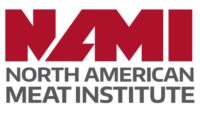Partnering With the World
Thanks to its international relationships, suburban Chicago-based OSI Group LLC is raising its performance bar in line with a quest to take its global food processing power higher.
by Barbara Young,
Editor-In-Chief
Editor-In-Chief
No need to remind the owners of OSI Group LLC and its management teams of the global nature of today‘s business transactions — they are way ahead of the game. The company, whose roots date back 95 years, is an example of how a tiny seed can produce a gargantuan tree, which, for one thing, is reflected in OSI’s revenue base of more than $3.3 billion in annual sales. Add the company’s force of 19,000 employees assigned to 77 facilities in 28 countries and a strong track record of providing innovative solutions to benefit OSI customers around the world, and the picture becomes clearer. Indeed, OSI’s presence reaches into practically every major marketing zone throughout the world. Despite its success, however, the corporation’s managers eschew the business limelight, preferring instead to embrace an operating strategy designed to support its customers’ brands that number among the most popular consumer products.
“OSI is one of the biggest companies in the world that no one has ever heard of,” beams Sheldon Lavin, OSI Group chairman, chief executive officer, and a 53-year business veteran. “We are a fiercely private company, capable of longer-term decisions than public companies answering to Wall Street for quarterly results. What that means is that the only person I answer to is the one I see in the mirror every morning. I can make decisions with a long-term view, and so can our other senior executives, although they do have a slightly smaller mirror.”
Lavin’s mirror also reflects the vision of the company born as a family meat market in Oak Park, IL, in early 1900 and later named Otto and Sons. “Our core strength is in product leadership and execution on behalf of our customers,” he says. “Our vision is to become the premier global food provider to customers who can effectively create and define consumer demands.”
To that end, the first order of business in January 2004, focused on restructuring the organization to establish OSI Group LLC as the parent of all operating units previously identified as members of the OSI family. The lineup now includes OSI Industries LLC for U.S.-based businesses, including the independent operating companies of Oakland Foods LLC in Oakland, IA, and Carolina Culinary Foods LP in West Columbia, SC. Others include OSI International Inc. and OSI International Foods LLC. International operations are strategically located within defined zones managed by experts in critical aspects of product development, processing, logistics, and distribution.
Besides fully cooked, batter-breaded, and fried lines, the OSI Group’s product portfolio includes a series of beef, poultry, and pork products, kettle and smoked items, raw and cooked bacon, specialty baked products, pizza, snacks, desserts, sauces, and fresh produce. Packaging formats include fresh retail products, convenience packaged items, and traditional fresh and frozen products in foodservice packaging. OSI Group’s commitment to quality food manufacturing begins with stringent controls over raw materials from source to delivery. Its processing capabilities are as diverse as its product lines.
“Our main job is to ensure that products we produce meet or exceed customers’ expectations and specifications,” explains Phyllis Antonacci, a senior vice president of U.S. operations. “OSI has helped pave the way for the industry in developing new systems and implementing standards that ensure safe products.”
The OSI production force is positioned as technical experts whose performance is bolstered by technology coupled with skill in commercial product manufacturing using cost-effective techniques. “Our customers’ brands are entrusted to us, so our focus is to protect those brands,” notes Joe Nalley, also a senior vice president of U.S. operations. “Because we have a worldwide infrastructure, we conduct our supplier audits, documentation, and testing with our own people on the ground.”
As vice president of research and development and quality assurance, B. K. Girdhar, Ph.D., oversees OSI food-safety programs. Over the past five years, the general public has become more aware and consequently more concerned about food-safety issues, he notes.
“This puts more pressure on companies like ours. We’ve added more expertise and systems and will continue to do so to maintain our outstanding record,” Girdhar says. “Providing safer and better products represents the foundation of all we do — there is no compromise.” To that end, the corporation embraces a four-step process involving learning, teaching, auditing, and feedback. Three senior quality-assurance managers attended the National Food Processing Association (NFPA) seminar on certified plants audits this year and are adding NFPA chapters to their own audits.
“We look at the total picture so we are in ‘Grade A’ shape going in,” Girdhar says. “This means having all the checks and balances in place in the plant, trained people, monitoring, and auditing. Our regulations are more stringent than most government regulations, and we must exceed those expectations along with those of our customers.”
OSI created a Commercialization Department in its U.S. organization in 2004 by combining the resources of sales and marketing, research and development, and engineering to develop promising new product ideas to bring to market. “This gives us the ability to take advantage of all our development resources so we know if a new product is viable going into the process,” Girdhar explains. “This includes qualifying a project in terms of customer demand, determining that it is doable at a competitive price, knowing that rates of production will be sufficient to justify the expense, and having a plan to make it at commercial levels in a plant.”
OSI develops ideas for new products on a regional basis, using its state-of-the art research and development facilities in the Chicago area, Northern Ireland, and Shanghai. For example, OSI’s Shanghai laboratory recently developed a number of rice products for a customer in the Asia/Pacific region, including rice Kiev, rice balls, and rice patties.
“We are a global organization, but we seek regional solutions based on the local needs of our customers,” Dave McDonald, senior executive vice president and zone manager for the Americas and Asia/Pacific, explains. “And we also look very closely to see where technology is transferable and applicable across geographic boundaries.”
Concerning the changed organizational structure, McDonald emphasizes that the difference primarily reflects a shift in operating procedures. “The faces our customers are accustomed to remain consistent,” he notes. “This continuity certainly enables us to understand our customers’ businesses while anticipating the needs of their consumers.” Additionally, McDonald points to the strength of OSI’s employee tenure, noting that the top 18 senior managers bring an average of 15 years of service to the OSI Group. “People stay because they like the family atmosphere, they enjoy being able to have a direct impact on the business, and there is an appeal to being on a winning team,” he concludes.
COLLABORATIVE GROWTH
As a strategic partner, the OSI Group is positioned to deliver solutions designed to accommodate a broad range of choices for its customers. Competitive prices for sure, but other benefits include an assured product supply, production integrity and innovation, and the leverage of scale its operations offer.
Its ability to partner with its customers and suppliers is the cornerstone of the OSI Group’s historical growth. The concept guided the company’s approach to adding capacity to create a manufacturing presence in an international market, the result being the ability to provide the group’s customers with access to a worldwide organization of suppliers.
Customers prefer fewer suppliers in today’s atmosphere of consolidation in the food business, McDonald acknowledges, adding that the OSI Group’s worldwide presence enables the company to be a partner for all their markets. “Customers need contingency plans to protect their brands,” he confirms. “We have processes in place internally to handle any external event so our customers aren’t forced to coordinate with three, four, or five different suppliers in different parts of the world.”
IN THE BEGINNING
Understanding the philosophy behind OSI’s business strategies necessitates a look at the company’s origin as a family meat market and its ties to the introduction of the American hamburger. The OSI Group started life as a butcher shop owned and operated by Otto Kolschowsky, a German immigrant, and his family. The business, renamed Otto and Sons in 1928, enjoyed a reputation as a regional meat business supplying fresh ground beef patties to a national restaurant chain by the 1950s.
Meanwhile, Ray Kroc, another entrepreneur of the time, envisioned an innovative restaurant format specializing in hamburgers. The two entities forged a business relationship in 1955 that began with a mere handshake to solidify a gentlemen’s agreement positioning Otto and Sons as a fresh-meat supplier. This business deal provided the basis for the phenomenal growth leading to the company becoming a McDonald’s dedicated supplier.
The introduction of cryogenic freezing in the late l960s later facilitated McDonald’s switch to frozen patties prompting the consolidation of its beef suppliers. To that end, McDonald’s recruited a few select beef grinding operations in line with its new procurement strategy of relying on a limited supply source of product manufacturing in strategic locations. One of those was Otto & Sons, renamed OSI Industries Inc. in 1975. OSI was one of five U.S. suppliers, and in 1990 McDonald’s represented 95 percent of OSI’s business.
Today, the company renamed OSI Group in 2004, supplies beef, poultry, and/or pork to more than 90 percent of McDonald’s worldwide restaurants, in addition to other non-meat products. Although the OSI Group attributes its significant growth to its McDonald’s partnership, representing the majority of its worldwide product volume, new business strategies fuel additional growth and future goals.
INTERNATIONAL LINKS
Doug Gullang, senior executive vice president and managing director of the OSI Group’s European Zone, began his career with McDonald’s, joining OSI 28 years ago. Not all customers are ready to embrace McDonald’s “intense partnering relationship,” but, as Gullang says, the principles are transferable.
“What’s important is to create an atmosphere of cooperation and co-dependency so that we can share our expectations and create a chemistry with each other,” Gullang assesses. “It’s a new thing for many customers, but the fact of the matter is that we need each other.”
Leveraging accomplishments tied to its McDonald’s business, the OSI Group began expanding its growth prospects in 1990 by targeting new partners in markets established through its relationships with McDonald’s. New partners include global retailers Tesco plc and Wal-Mart. Others include Nestlé, a global food and beverage company; as well as Kraft Foods Inc., Sara Lee Corporation, and ConAgra Foods Inc., all branded product leaders in the global community.
OSI Group’s local team in the United Kingdom recently acquired two substantial poultry companies in Europe, where all the upfront work through the due-diligence phase was conducted. As Lavin reports, the team identified targets, investigated the operations, developed letters of intent, and completed the due diligence before closing. “The ultimate decision was a corporate one, but they put the deals together,” he says.
Putting the right people in place is an ongoing mission in line with the OSI Group’s emphasis on empowering managers in local markets.
“We give our field managers a lot of latitude to operate within the policy parameters we establish,” Lavin stresses. “We want them to be entrepreneurial decision-makers willing to take calculated risks knowing there will be some mistakes along the way. It’s a formula that we’ve found works very well.”
OSI acquired a European business under the leadership of Trefor Campbell, managing director of OSI Group’s Moy Park chicken production facilities in the United Kingdom. Campbell led a management buyout of Moy Park in 1984 and OSI acquired the operation in 1996.
“When I took Lavin to the airport after we signed the purchase papers on Friday, I asked him what he wanted me to do on Monday and he said, ‘Just run the business,’” Campbell says. “As it turned out, we did just that, and we didn’t see anyone from OSI for the next six-to-seven weeks.” The food business has become so fast-paced that Campbell predicts suppliers who can’t keep up with rapid change will lose business.
“Every day that’s lost is a lost sale, and we sometimes have to adjust to a customer’s promotional needs in a matter of hours,” Campbell says. “OSI Group sets my capital limits, but within that, I can act immediately. Yes, we will make mistakes from time to time, but our philosophy is that the man that never made a mistake never made a thing.”
Staying close to customers on a daily basis, and helping them understand the best way to increase sales by meeting consumer needs, rate among the most valuable services a supplier can provide. “We believe that if the customer is king, then the consumer is supreme,” Campbell says. “We receive a great deal of data and by analyzing and leveraging that information we can recommend the right things to put on the shelf at the right price. That’s an indispensable service to our customers.” This capability comes in handy for OSI in serving as chicken brand manager for the Tesco supermarket chain in the United Kingdom. Unlike America, store brands in England represent the premium end of the product line. “It is critical that we be leaders, and not followers,” Gullang points out. “Having a strong base of business is very important as a foundation for accommodating our customers with product innovation.”
Claudio Geiger, OSI’s country manager in Brazil, is a major supplier of fully cooked chicken products to Japan and other Asian countries. He identifies flexibility as one of OSI’s tools of success. “When the avian flu broke out in Asia, this presented a significant issue for some of our worldwide customers,” Geiger recalls. “Almost immediately, we had prepared our plants with the specific formula for chicken products in Japan and were up and running and shipping products. This is all part of what it means to be a partner for our customers.” Brazilian plants supply a variety of markets operating under specific food-safety standards, which behooves Geiger and his production team to adhere to strict standards. “With chicken, for example, the British Retail Council has adopted very demanding standards for production,” he explains. “So, when we meet those standards, all the other export customers are covered.” The ability to adapt to customer needs, moreover, is illustrated by the OSI Group’s agreement to become McDonald’s produce supplier in the challenging Chinese market.
“We have a partnering culture based on trust,” McDonald emphasizes. “We have learned through the years that we are only successful if our customers are successful. To do that, we provide the manufacturing execution and innovation with both products and processes so that we can help our partners find sales solutions on behalf of our mutual consumers.”
Trust has put OSI in good stead, as McDonald explains. “We’ve had to rely on partners in many geographies where we trusted them and they trusted us.” NP






